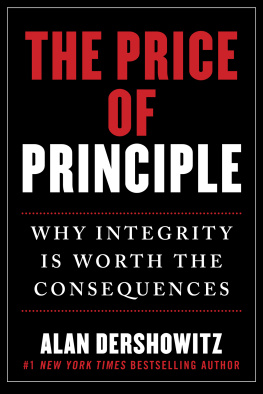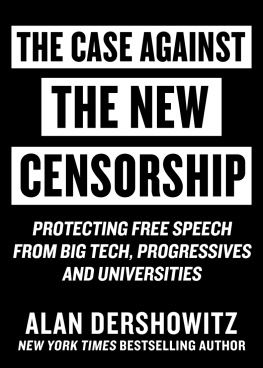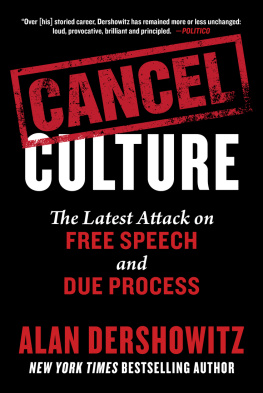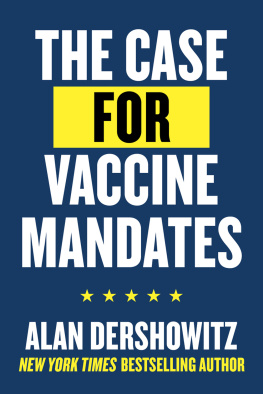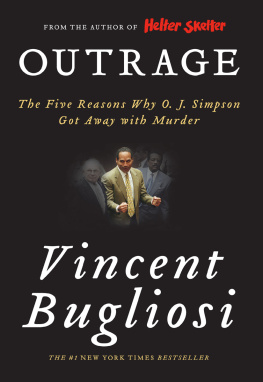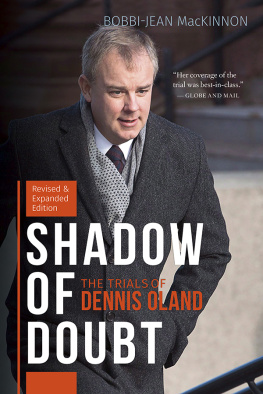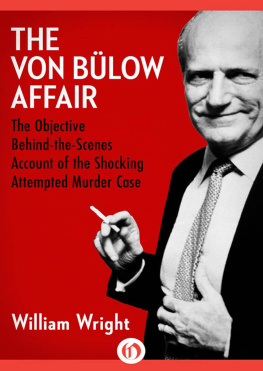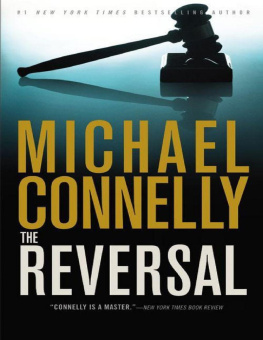Alan Dershowitz - Reversal of Fortune: Inside the Von Bulow Case
Here you can read online Alan Dershowitz - Reversal of Fortune: Inside the Von Bulow Case full text of the book (entire story) in english for free. Download pdf and epub, get meaning, cover and reviews about this ebook. year: 2013, publisher: Random House Publishing Group, genre: Non-fiction. Description of the work, (preface) as well as reviews are available. Best literature library LitArk.com created for fans of good reading and offers a wide selection of genres:
Romance novel
Science fiction
Adventure
Detective
Science
History
Home and family
Prose
Art
Politics
Computer
Non-fiction
Religion
Business
Children
Humor
Choose a favorite category and find really read worthwhile books. Enjoy immersion in the world of imagination, feel the emotions of the characters or learn something new for yourself, make an fascinating discovery.

- Book:Reversal of Fortune: Inside the Von Bulow Case
- Author:
- Publisher:Random House Publishing Group
- Genre:
- Year:2013
- Rating:5 / 5
- Favourites:Add to favourites
- Your mark:
- 100
- 1
- 2
- 3
- 4
- 5
Reversal of Fortune: Inside the Von Bulow Case: summary, description and annotation
We offer to read an annotation, description, summary or preface (depends on what the author of the book "Reversal of Fortune: Inside the Von Bulow Case" wrote himself). If you haven't found the necessary information about the book — write in the comments, we will try to find it.
NOTE: This edition does not include photographs.
Reversal of Fortune: Inside the Von Bulow Case — read online for free the complete book (whole text) full work
Below is the text of the book, divided by pages. System saving the place of the last page read, allows you to conveniently read the book "Reversal of Fortune: Inside the Von Bulow Case" online for free, without having to search again every time where you left off. Put a bookmark, and you can go to the page where you finished reading at any time.
Font size:
Interval:
Bookmark:

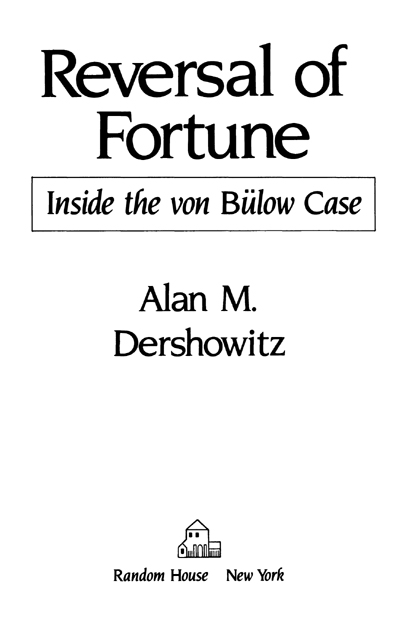
Copyright 1986 by Alan M. Dershowitz
All rights reserved under International and Pan-American Copyright Conventions.
Published in the United States by Random House, Inc., New York, and
simultaneously in Canada by Random House of Canada Limited, Toronto.
Library of Congress Cataloging-in-Publication Data
Dershowitz, Alan M.
Reversal of fortune.
1. Von Blow, Claus, 1926 Trials, litigation,
etc. 2. Trials (Murder)Rhode IslandNewport.
I. Title.
KF224.V66D47 1985 345.7302523 8525722
eISBN: 978-0-307-82831-6
347.3052523
v3.1
Claus von Blow, born in Copenhagen, Denmark, on August 11, 1926. Married Martha von Auersperg on June 6, 1966. His only child, Cosima von Blow, was born in April 1967.
Martha (Sunny) von Blow, ne Crawford, born in a Pullman car on September 1, 1931. Married Prince Alfred (Alfie) von Auersperg on July 20, 1957. The two children of this marriage are Princess Annie Laurie Kneissl and Prince Alexander von Auersperg. Married Claus von Blow on June 6, 1966. Their only child is Cosima.
Prince Alexander von Auersperg, born to Prince Alfred and Princess Martha von Auersperg in 1959. Graduated from Brown University in 1983. Now works for an investment firm in New York City. Recently inherited approximately $45 million from his maternal grandmother, Annie Laurie (Crawford) Aitken.
Princess Annie Laurie (Ala) Kneissl, ne von Auersperg, born to Prince Alfred and Princess Martha von Auersperg in 1958. Married Franz Kneissl on May 31, 1980. Now lives in New York City. Recently inherited approximately $45 million from her maternal grandmother.
Cosima von Blow, born to Claus and Martha von Blow in 1967. Now attends Brown University. Recently was disinherited by her maternal grandmother of approximately $30 million for siding with her father.
Maria Schrallhammer, maid to Martha von Blow since 1957. Born near Munich, Germany. Worked for Ala Kneissl after Sunnys second coma. Retired and returned to Germany after the second trial.
Alexandra Isles, soap-opera actress and mistress of Claus von Blow between 1979 and 1981.
Andrea Reynolds, constant companion of Claus von Blow during the appeal and the second trial. Deeply involved in litigation and press strategy.
Richard Kuh, former District Attorney of Manhattan, now in private practice. Retained by the von Auersperg and Aitken families to conduct a discreet private investigation into circumstances surrounding Sunnys comas.
Stephen Famiglietti, chief prosecuting attorney at the first trial. Now in private practice.
Herald Price Fahringer, chief defense attorney at the first trial.
John Sheehan, experienced and successful Rhode Island trial lawyer, recommended to Claus von Blow by Senator Claiborne Pell; was co-counsel at both trials.
Alan Dershowitz, chief counsel for the appeal and the new-trial motion, and strategist and consultant for the second trial.
Susan Estrich, Jeanne Baker, Christopher Edley, David Fine, attorneys who worked with Dershowitz.
Joann Crispi and Andrew Citron, graduates of Harvard Law School who worked first with Dershowitz, then with Claus von Blow, and ultimately with Thomas Puccio on the second trial.
John Terry MacFadyen, Rhode Island lawyer and former public defender, retained by Dershowitz as local counsel and associate for the appeal and the new-trial motion.
Thomas Puccio, Claus von Blows chief trial lawyer for the second trial. Former Abscam prosecutor, now in private practice in New York.
Roanne Sragow, former assistant District Attorney of Middlesex County, Massachusetts, retained to serve as conduit for all financial dealings with David Marriott.
Marc DeSisto and Henry Gemma, prosecutors at the second trial.
David Marriott, former printer, who swore he had delivered drugs to Clarendon Court.
Father Philip Magaldi, respected parish priest in North Providence, who corroborated Marriotts account.
Truman Capote, noted author and longtime friend of Martha von Blow, who provided an affidavit for the new-trial motion but died before the second trial.
Joanne Carson, second wife of Johnny Carson and longtime friend of Truman Capote, who corroborated Capotes account.
C. Z. Guest, New York and Newport socialite, who corroborated Capotes affidavit.
Dr. Richard Stock, New York doctor to the wealthy. Martha von Blows physician for twenty-nine years.
Dr. Janis Gailitis, a Newport, Rhode Island, doctor who treated Martha during both comas.
Dr. George Cahill, Harvard professor and experts-expert on blood sugar, former director of the Joslin Research Laboratories, who testified for the state at both trials.
Dr. Robert Bradley, Dr. Cahills colleague at the Joslin Institute, who testified at the second trial that he was 100 percent certain that the first coma had been caused by insulin and 99 percent certain about the second coma.
Dr. Arthur Rubenstein, professor and chairman of the Department of Medicine at the University of Chicago Medical School, who provided an affidavit for the new-trial motion and testified for the defense at the second trial.
Dr. Leo Dal Cortivo, chief toxicologist, Office of Suffolk County (New York) Medical Examiner, who provided an affidavit for the new-trial motion and testified for the defense at the second trial.
Dr. Harold Lebovitz, professor of medicine and head of endocrinology and diabetes at Downstate Medical Center in New York, who provided an affidavit for the new-trial motion and testified for the defense at the second trial.
This case has everything, declared the prosecutor. It has money, sex, drugs; it has Newport, New York and Europe; it has nobility; it has maids, butlers, a gardener. Clarendon Court [the mansion where the critical events took place] has a big gate. Most people cant see inside. This case is where the little man has a chance to glimpse inside and see how the rich live.
One commentator called the von Blow case an epic drama made for the stage. The productionboasting a cast of thousandswould have made Cecil B. De Mille proud, with its plots and subplots, major and minor characters, days of nail-biting tension and periods of comic relief.
No wonder some called it the case of the decade. But media hype-ers bestow such appellations on notorious trials just about every other year. A journalist once described the Patricia Hearst case the Another Trial of the Centurythe Fourth or Fifth in [F. Lee Baileys] Sixteen-Year Legal Career. The American trial has always been an entertainmenta cross between soap opera, spectator sport and morality play.
To qualify as a case of the decade, a trial has to meet certain criteria: The players must be sufficiently important, wealthy, fascinating or mysterious to capture the popular imagination. The alleged crime should be insidiously clever, motivated by a combination of lust and lucre. It is best if the defendant is convicted at a first trial full of surprising twists and that new evidence is subsequently discovered that casts doubt on the original verdict. The guilt or innocence of the accused must be in real doubt, so that the partisans on each side will have something to root for. Even better, there should be a specter of possible frame-up in the air, so that if the defendant is indeed innocent,
Font size:
Interval:
Bookmark:
Similar books «Reversal of Fortune: Inside the Von Bulow Case»
Look at similar books to Reversal of Fortune: Inside the Von Bulow Case. We have selected literature similar in name and meaning in the hope of providing readers with more options to find new, interesting, not yet read works.
Discussion, reviews of the book Reversal of Fortune: Inside the Von Bulow Case and just readers' own opinions. Leave your comments, write what you think about the work, its meaning or the main characters. Specify what exactly you liked and what you didn't like, and why you think so.

